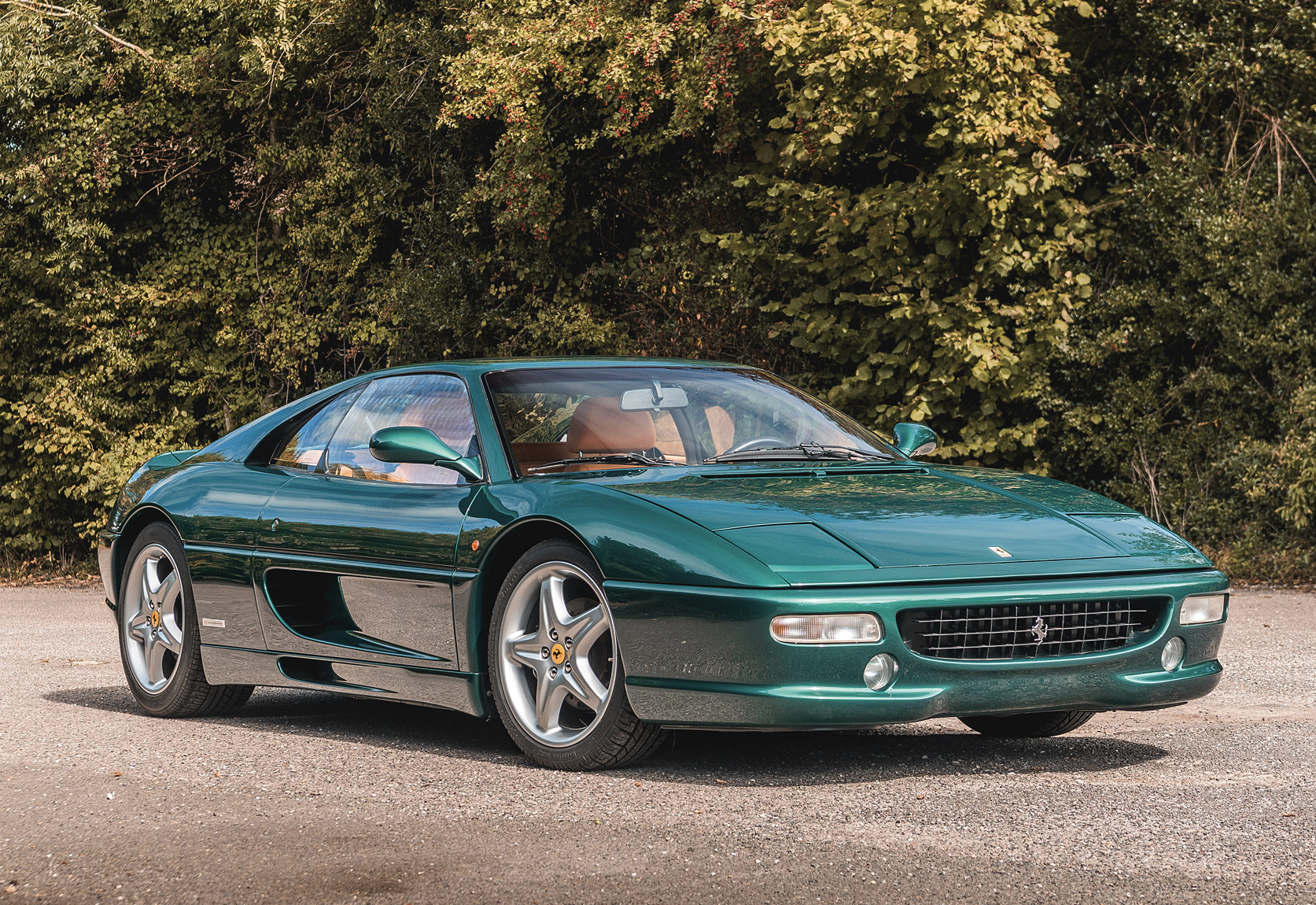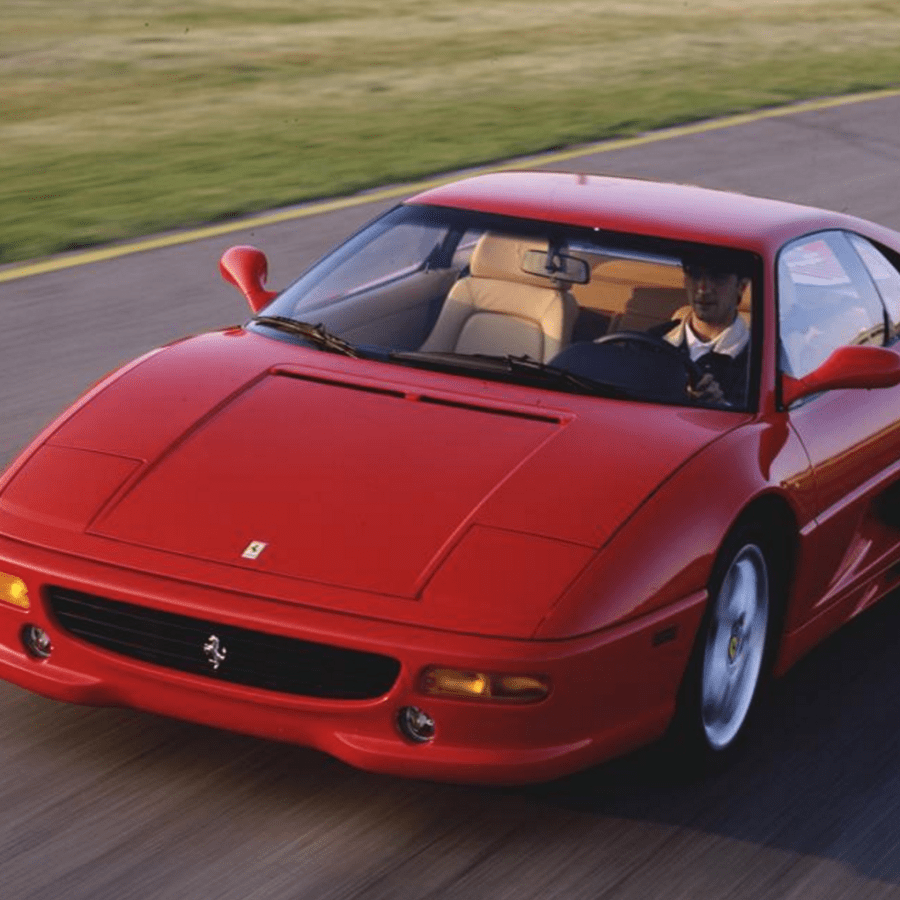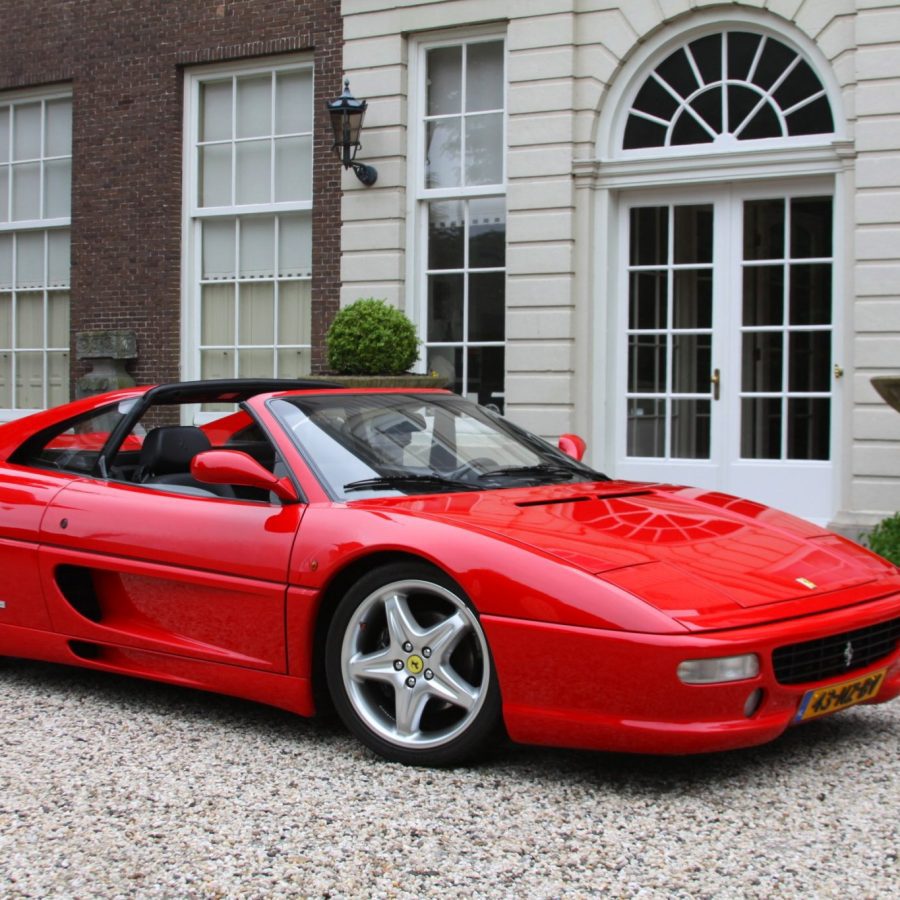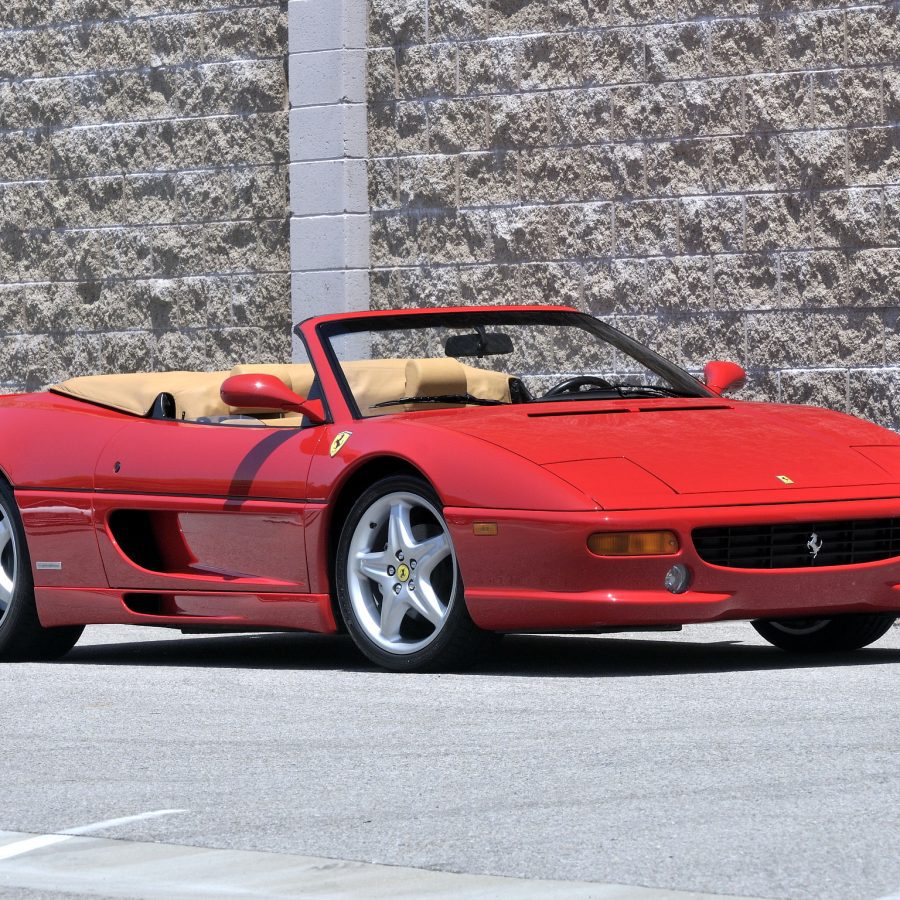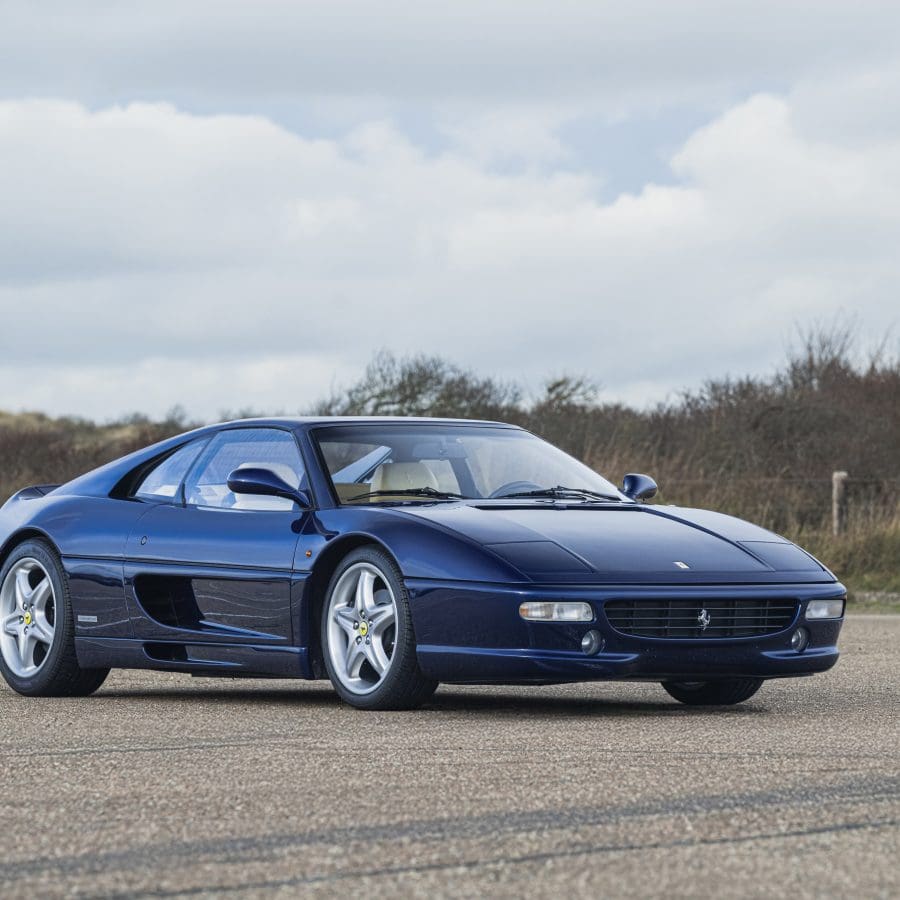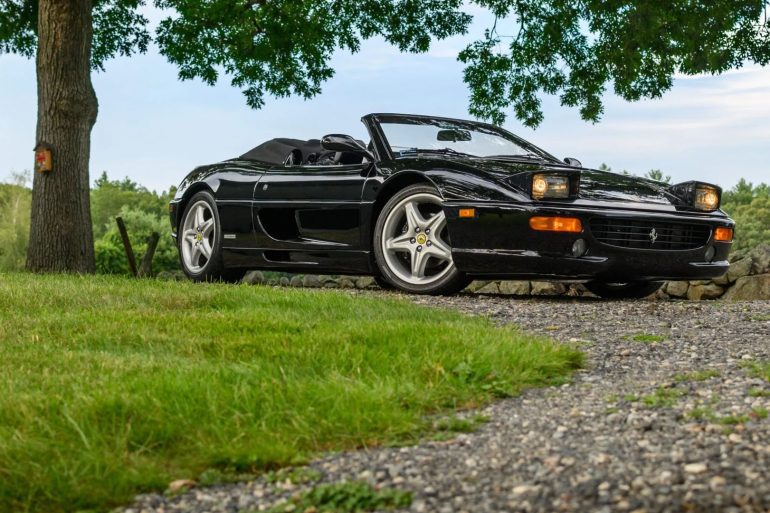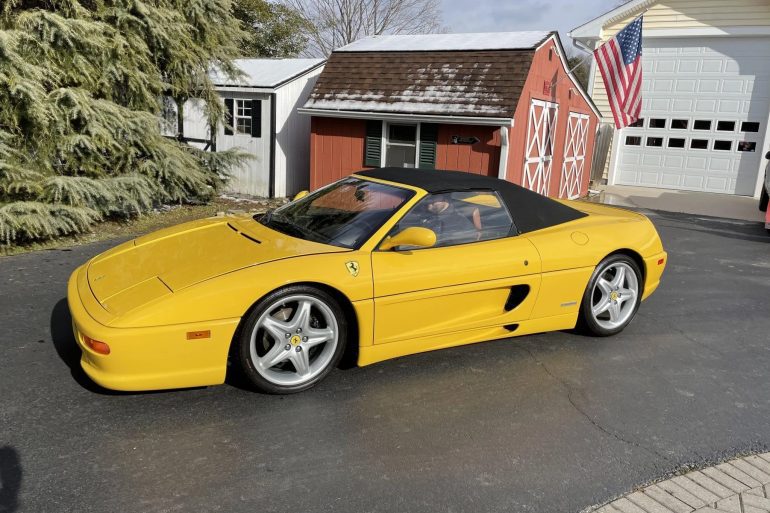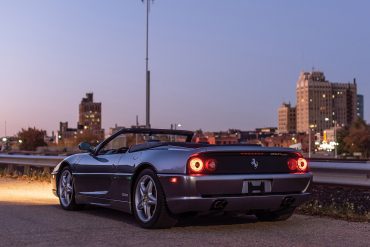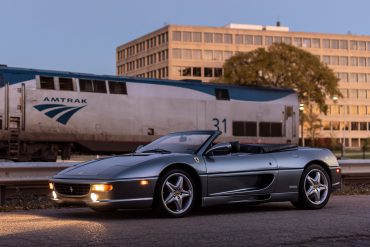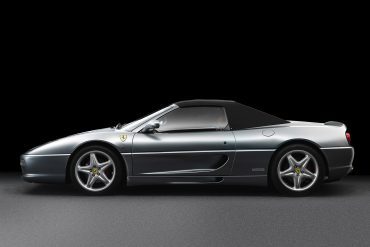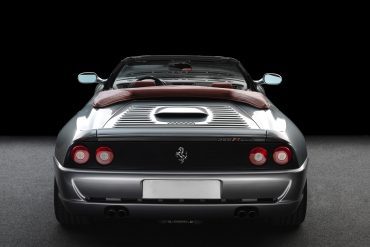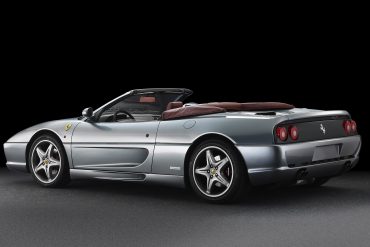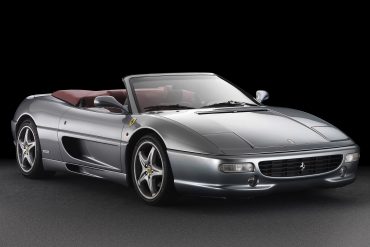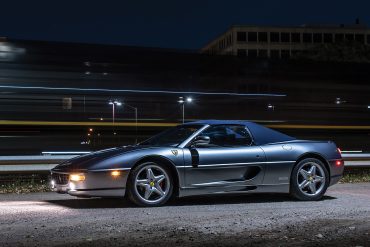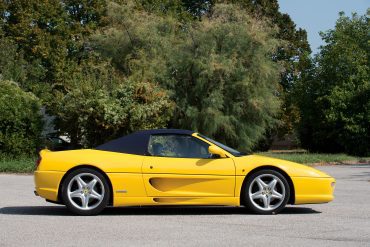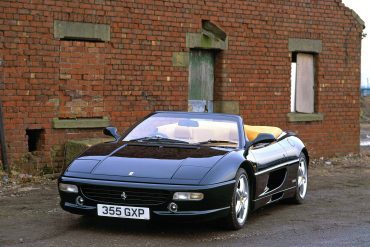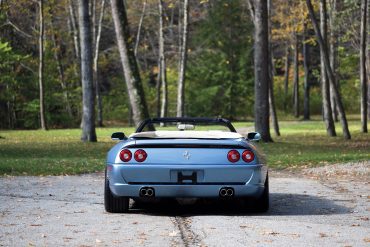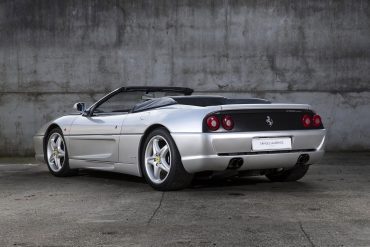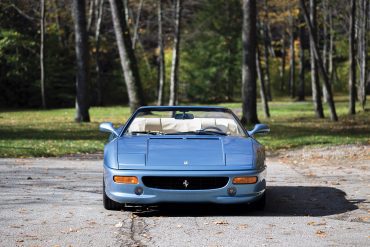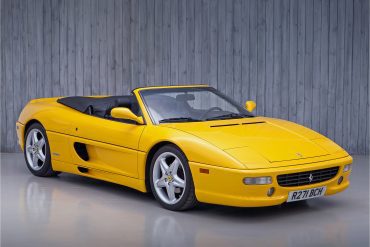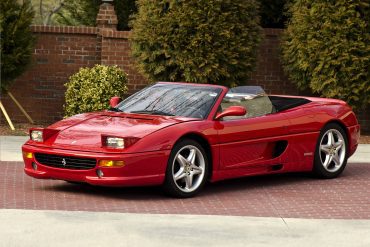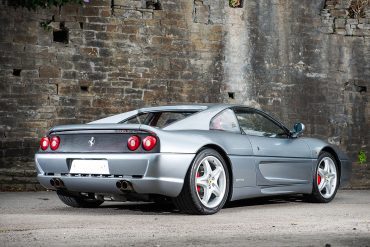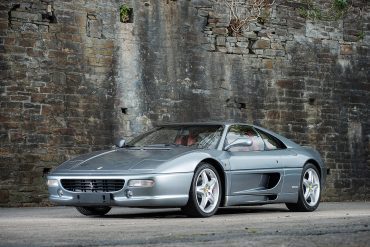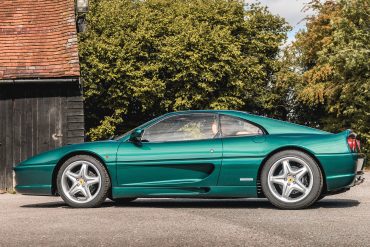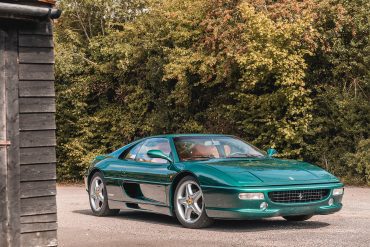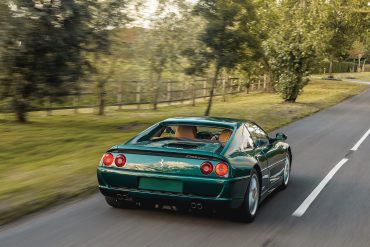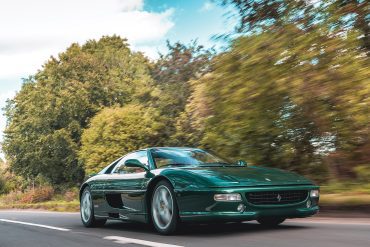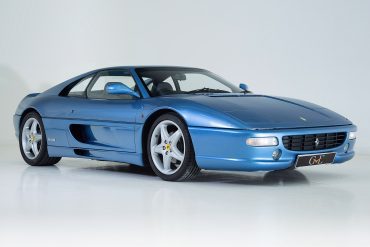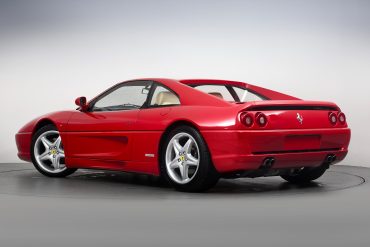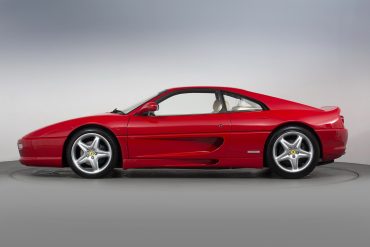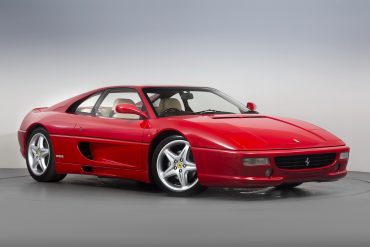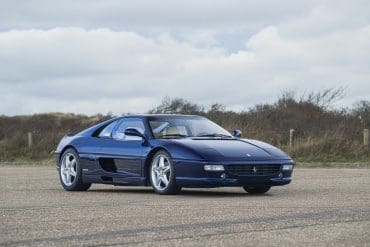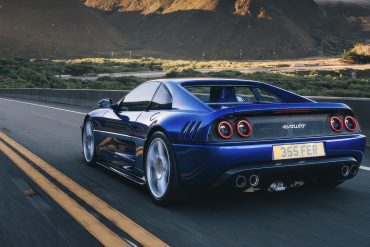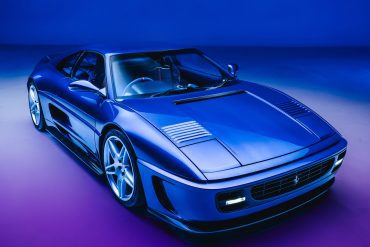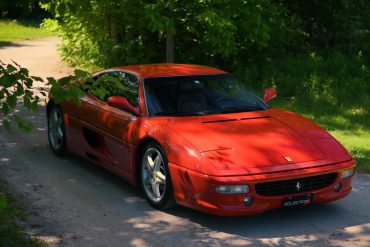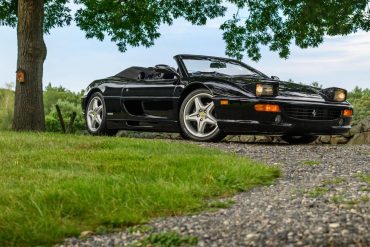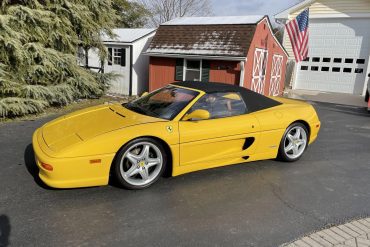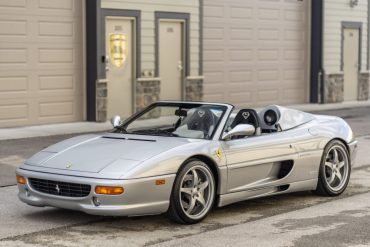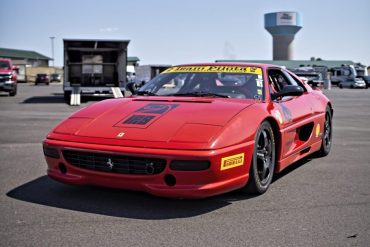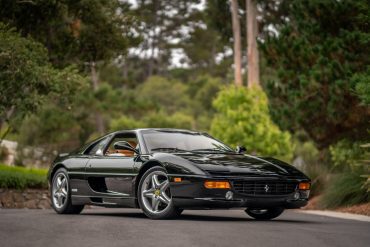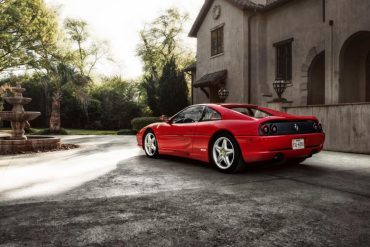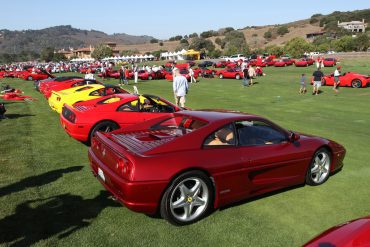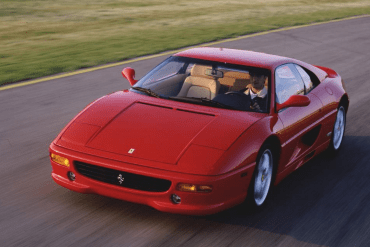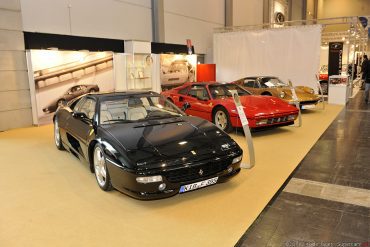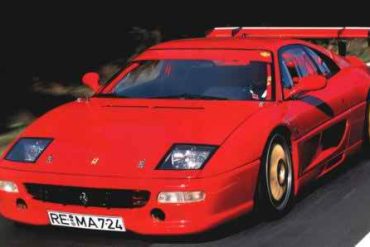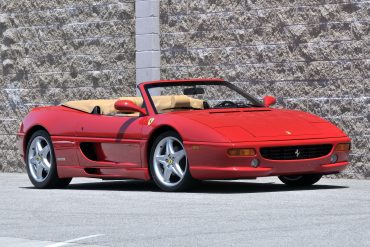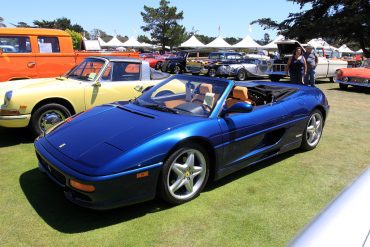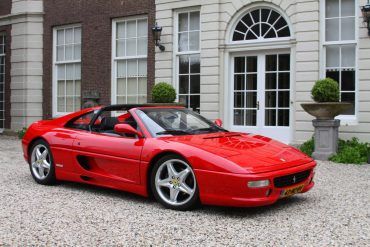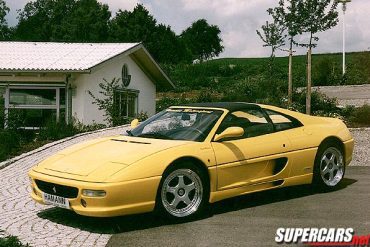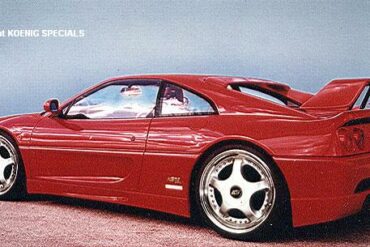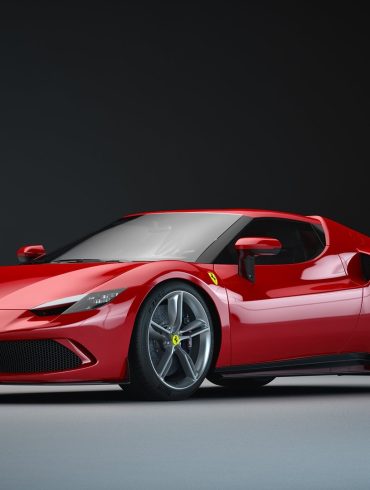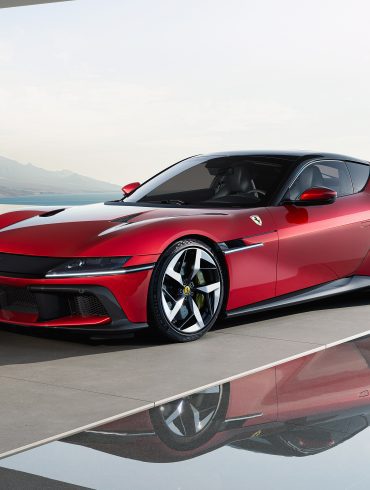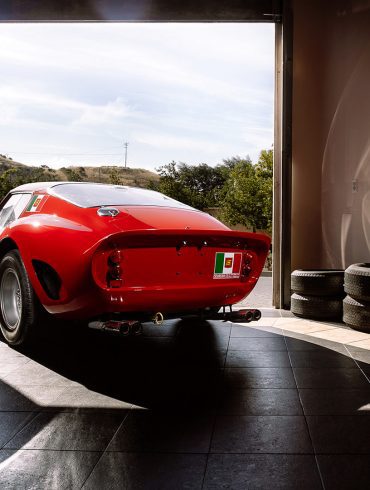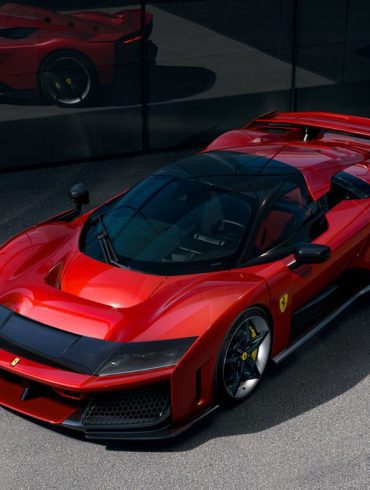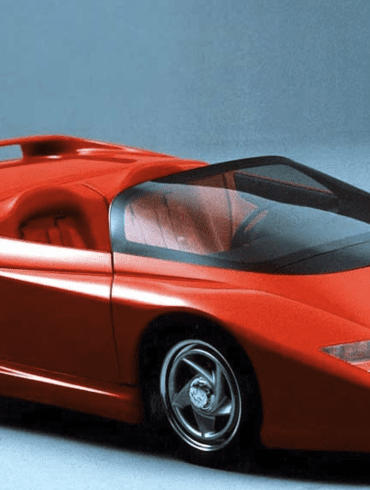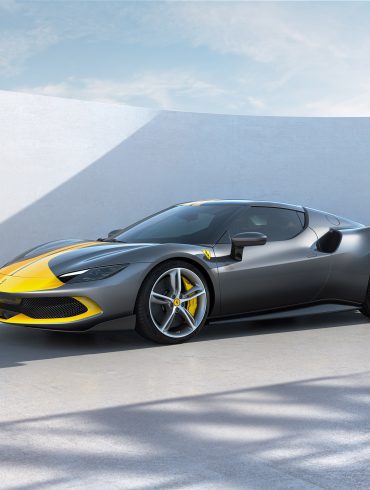Ferrari F355 Berlinetta Built as Ferrari’s entry level supercar, the F355 followed the 308, 328 and 348 as a cheaper alternative to their V12 models. Ferrari President Luca di Montezemolo encouraged the design, engineering and marketing teams at Ferrari to create something entirely new, exciting and completely different from the...
Ferrari F355
The Ultimate Guide
Built as Ferrari’s entry level supercar, the F355 followed the 308, 328 and 348 as a cheaper alternative to their V12 models. Ferrari President Luca di Montezemolo encouraged the design, engineering and marketing teams at Ferrari to create something entirely new, exciting and completely different from the 348. In 1994 Ferrari did it and replaced the 348 series with the F355. The car was once again designed by Pininfarina and had a similar layout and proportions to the 348, but was much more beautiful. The F355’s 40-valve V-8 had 375 horsepower and 268 pound-feet of torque. The V8 revs to satisfying 8,250rpm and sounds guttural, rough and very Ferrari-like. 0-62mph in 4.7 seconds and a top speed of 183mph were both very fast for the day. For most, the scream of that wild V8, the click-clack of the truly satisfying metal gate manual gearbox and the looks are what makes this Ferrari special.
Overview / Variants / Models In-Depth / The Market / Buyer's Guide / Images / More Updates
Ferrari F355: The Modern Classic That Redefined the Prancing Horse
The Ferrari F355 is often celebrated as one of the most iconic Ferraris of the modern era. Released in 1994 as a successor to the 348, the F355 marked a pivotal moment for Ferrari, combining striking design, innovative technology, and refined performance.
Hailed for its blend of beauty and handling precision, the F355 became an instant classic, winning the hearts of enthusiasts and critics alike. This article explores the history, legacy, design, performance, and reception of the Ferrari F355, illustrating why it remains one of Ferrari’s most beloved models.
A Leap Forward
The Ferrari F355 was developed to address the criticisms that plagued the 348, particularly in areas of performance and handling. Ferrari sought to create a car that was not only faster but more refined and enjoyable to drive. Introduced at the Geneva Motor Show in 1994, the F355 quickly established itself as a game-changer, showcasing Ferrari’s commitment to blending performance with innovation.
The F355 introduced several new technologies that set it apart from previous models:
5-Valve Cylinder Heads: The F355 was the first Ferrari to use five valves per cylinder, which enhanced airflow and increased power output.
Improved Aerodynamics: With extensive wind tunnel testing, the F355 achieved a balance between stability and agility, incorporating elements like a flat undertray and carefully sculpted bodywork.
Electronically Controlled Suspension: An advanced adaptive suspension allowed the F355 to adapt to various driving conditions, enhancing both comfort and performance.
As a result of these innovations, the F355 was significantly more powerful, agile, and refined than the 348, marking a major step forward for Ferrari.
Beauty and Purpose by Pininfarina
Designed by Pininfarina, the Ferrari F355 is often praised for its timeless aesthetics. Combining elegance with aggressive cues, the F355 captured the essence of Italian automotive design in the 1990s.
Exterior Styling: The F355 features flowing lines, a sleek front end, and rounded edges that give it a balanced look. The signature side intakes, pop-up headlights, and low-slung stance add to its allure.
Body Variants: Ferrari offered the F355 in three body styles—Berlinetta (coupe), GTS (targa), and Spider (convertible). Each variant maintained the F355’s core design while providing unique driving experiences.
Aerodynamics: Extensive wind tunnel testing influenced the car’s shape, and the addition of a flat underbody and rear diffuser helped reduce drag while improving high-speed stability.
One of the most admired aspects of the F355 is how well it has aged. With its classic lines and proportions, the F355 remains one of the most visually appealing Ferraris, and its design is often hailed as one of the finest examples of Pininfarina’s work.
A Driver’s Ferrari
At the heart of the F355 is a naturally aspirated 3.5-liter V8 engine that delivers 375 horsepower at 8,250 rpm. This engine, combined with Ferrari’s innovations in aerodynamics and handling, created a car that was both thrilling and accessible.
0-60 mph: The F355 accelerates from 0 to 60 mph in 4.6 seconds, thanks to its powerful engine and lightweight construction.
Top Speed: The F355 reaches a top speed of 183 mph, making it one of the fastest Ferraris of its time.
High-Revving V8: The V8 engine’s 5-valve-per-cylinder design allowed it to reach high RPMs with ease, producing a distinctive exhaust note that’s become synonymous with Ferrari’s V8s.
The F355 also marked Ferrari’s first foray into paddle-shift technology with the optional F1-style transmission introduced in 1997. While some purists prefer the traditional gated manual transmission, the F1 transmission attracted buyers interested in cutting-edge technology, and it became a significant milestone in Ferrari’s evolution.
Critical Acclaim and Enthusiast Praise
Upon its release, the Ferrari F355 received widespread praise from automotive critics and enthusiasts. Compared to its predecessor, the F355 was lauded for its improved handling, power delivery, and overall refinement.
Motor Trend described the F355 as “a revelation, not just another step forward but a true leap in Ferrari engineering.” The magazine praised the car’s responsive handling, precise steering, and ability to make drivers feel connected to the road. It was this driving feel that set the F355 apart from other high-performance cars of the time.
In a review by Road & Track, the F355 was described as “a masterpiece,” with the reviewer noting that the car “sounds like a Formula 1 car, pulls like a racehorse, and looks like a piece of art.” This sentiment echoed the feelings of many enthusiasts, who admired the car’s unique combination of beauty, performance, and Ferrari’s racing DNA.
Car and Driver praised the F355’s handling, describing it as “one of the most satisfying Ferraris to drive.” The magazine highlighted the car’s adaptive suspension system, which allowed the F355 to deliver a smoother ride on highways and an aggressive setup on twisty roads, creating a versatile and enjoyable experience.
A Lasting Legacy and Impact
The Ferrari F355’s success had a lasting impact on Ferrari’s lineup, shaping the brand’s approach to performance, innovation, and design. It’s often regarded as a model that bridged the gap between classic analog Ferraris and the more technologically advanced models that followed. The F355’s introduction of the F1-style transmission marked the beginning of a new era for Ferrari, and it laid the groundwork for advancements in technology that continue to define the brand.
Many enthusiasts consider the F355 a turning point for Ferrari, as it re-established the brand’s reputation for creating cars that were not only fast but also refined and enjoyable to drive. The car’s aesthetic appeal, coupled with its engaging driving dynamics, has solidified its status as one of Ferrari’s most beloved models.
The Ferrari F355 Today: Collectibility and Investment Potential
The F355 has gained popularity in recent years, not only as a performance car but also as a valuable collectible. Its blend of classic styling, advanced technology, and Ferrari heritage has driven demand among collectors, and values have been rising accordingly.
The Ferrari F355 remains one of Ferrari’s most revered models, praised for its design, performance, and role in Ferrari’s evolution. It’s a car that embodies the passion and precision of Ferrari, bridging the gap between analog and modern technology. From its stunning Pininfarina design to its exhilarating V8 power, the F355 is a car that continues to captivate enthusiasts and collectors alike.
In many ways, the F355 is more than just a car—it’s a masterpiece that represents a golden era for Ferrari. For those lucky enough to own or drive one, the F355 offers an unforgettable experience that resonates with the soul of Ferrari’s racing heritage. And with values continuing to rise, the F355 has firmly established itself as a wise investment for collectors, solidifying its place as one of Ferrari’s most iconic creations.
Ferrari F355 Specs
Manufacturer: Ferrari
Production: May 1994–1999
Model years: 1995–1999
Assembly: Maranello, Italy
Designer: Maurizio Corbi
Class: Sports car (S)
Body style: 2-door berlinetta, 2-door targa top, 2-door spider
Layout: Rear mid-engine, RWD
Engine: 3.5-litre 5V F129 B/C V8
Transmission: 6-speed manual, 6-speed F1 auto-manual
Wheelbase: 2,451 mm (96.5 in)
Length: 4,249 mm (167.3 in)
Width: 1,900 mm (75 in)
Height: 1,171 mm (46.1 in)
Kerb weight: 1,483–1,497 kg
Predecessor: Ferrari 348
Successor: Ferrari 360
Did You Know?
The "355" in F355 refers to its 3.5-liter engine displacement and its 5 valves per cylinder.
The F355 was the first road car to feature an F1-style gearbox with paddle shifters. This technology, derived from Ferrari's Formula 1 cars, revolutionized gear shifting in high-performance vehicles
The F355's V8 engine utilized a flat-plane crankshaft, which contributed to its high-revving nature and its distinctive, screaming exhaust note.
The F355 was one of Ferrari's best-selling models, with over 11,000 units produced during its production run. This popularity is a testament to its enduring appeal.
Ferrari F355 Variants
There were several variants of the F355 over the years. We outline the key data on each below.
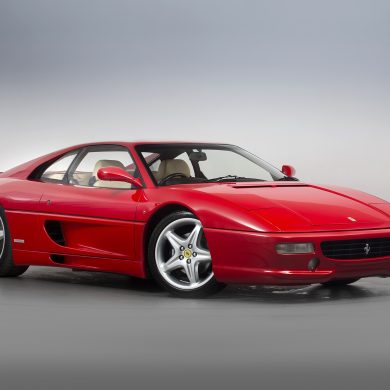
Ferrari F355 Berlinetta
Type: Production Car
Years: 1994 - 1999
Production: 3,829 units
Engine: 3.5 L Nat Asp V8
Power: 375 bhp @ 8,250 rpm
Torque: 268 lb/ft @ 6000 rpm
0-60 mph: 4.7 seconds
Top Speed: 183 mph
The F355 was a major hit: its full body undertray was highlighted as a performance benchmark upon release and orders piled in faster than Ferrari could fill them. Press reviews were favorable and generally appreciated the 25% percent increase in horsepower, as well as Pininfarina’s gracious styling. Learn More.
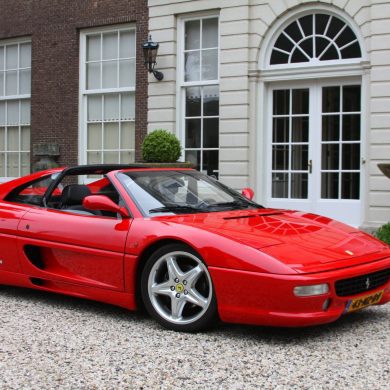
Ferrari F355 GTS
Type: Production Car
Years: 1995 - 1999
Production: 2,577 units
Engine: 3.5 L Nat Asp V8
Power: 375 bhp @ 8,250 rpm
Torque: 268 lb/ft @ 6000 rpm
0-60 mph: 4.7 seconds
Top Speed: 183 mph
In 1995, Ferrari introduced the GTS model to the F355 family. The GTS model was based on the F355 Berlinetta but offered a removable "targa-style" roof. Other specifications were identical to the Berlinetta. 2,577 GTS models were produced, with 2,048 6-speed manuals. Learn more.
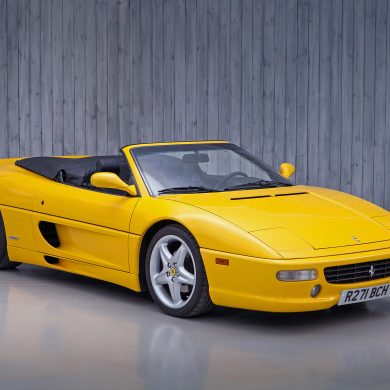
Ferrari F355 Spider
Type: Production Car
Years: 1996 - 1999
Production: 2,690 units
Engine: 3.5 L Nat Asp V8
Power: 375 bhp @ 8,250 rpm
Torque: 268 lb/ft @ 6000 rpm
0-60 mph: 4.7 seconds
Top Speed: 175 mph
In 1994 Ferrari offered a convertible version of their 355 known as the Spider. It was developed exclusively by Pininfarina to have a semi-automatic soft top. It was powered electronically (a first for Ferrari at the time). They tested it 1800 hours in a wind tunnel. Learn more.
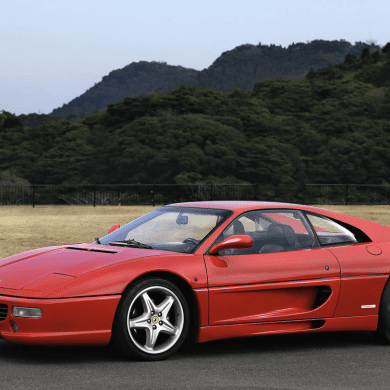
Ferrari F355 F1
Type: Production Car
Years: 1997 - 1999
Production: 1,042 units
Engine: 3.5 L Nat Asp V8
Power: 375 bhp @ 8,250 rpm
Torque: 268 lb/ft @ 6000 rpm
0-60 mph: 4.7 seconds
Top Speed: 183 mph
In 1997, a new electro-hydraulic gearbox became available known as the F1 transmission. This was the first ever road car to be equipped with the innovative F1-style gearbox management system. The system was operated by paddles behind the steering wheel using the F355’s 6-speed manual. It was amazing at the time, but has not aged well, with the manual being better. Learn more.
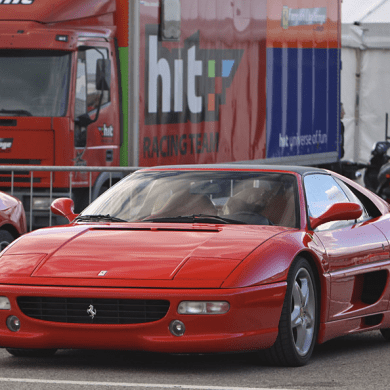
Ferrari F355 F1 GTS
Type: Production Car
Years: 1997 - 1999
Production: 529 units
Engine: 3.5 L Nat Asp V8
Power: 375 bhp @ 8,250 rpm
Torque: 268 lb/ft @ 6000 rpm
0-60 mph: 4.7 seconds
Top Speed: 183 mph
Like all the 355 series, the 355 F1 GTS is powered by a 3.5-liter V8 featuring titanium rods, five-valve cylinder heads, and a 180-degree crankshaft. The engine delivered a total of 375 hp at 8,250 rpm. Performance was 0–60 mph in 4.7 seconds, the quarter mile in the low 13-second range, and top speed went to an impressive 183 mph. In 1997, it got the F1 tranny. Learn more.
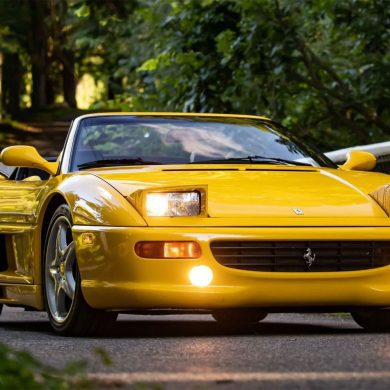
Ferrari F355 F1 Spider
Type: Production Car
Years: 1997 - 1999
Production: 1,127 units
Engine: 3.5 L Nat Asp V8
Power: 375 bhp @ 8,250 rpm
Torque: 268 lb/ft @ 6000 rpm
0-60 mph: 4.7 seconds
Top Speed: 175 mph
In 1997, a new electro-hydraulic gearbox became available known as the F1 transmission and was available in the Spider. This is the car that many people look for these days, being a later model year and convertible. The F1 tranny is, at best, clunky, the leather dash will shrink from sitting in the sun, and the 355s all have, at some point, the dreaded sticky switches. Learn more.
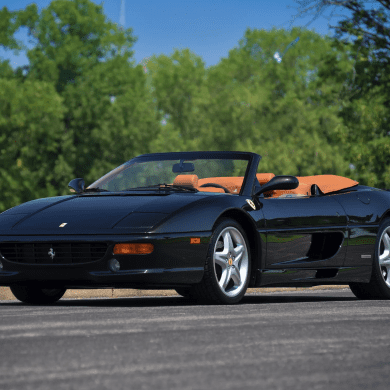
Ferrari F355 Limited Edition Fiorano
Type: Special Edition
Years: 1997 - 1999
Production: 100
Engine: 3.5 L Nat Asp V8
Power: 375 bhp @ 8,250 rpm
Torque: 268 lb/ft @ 6000 rpm
0-60 mph: 4.7 seconds
Top Speed: 175 mph
For the 1999 model year, Ferrari introduced a limited production of F355 Spider models designated, "Serie Fiorano". Launched in March 1999, this limited production run of 100 planned units (104 actually produced) included a number of enhancements increasing the track performance much closer to the Challenge versions. Learn more.
"The F355 is a symphony of sound and motion. Its V8 engine produces a glorious exhaust note, and its chassis is perfectly balanced and composed."
Autocar (at the time of launch)
Ferrari F355 Buyer's Guide
Buying Tips & Things to Look for When Buying A Used Ferrari F355
Here’s a detailed buyer’s guide for the Ferrari F355, covering potential issues, key inspection areas, and a look at its desirability and investment potential.
Overview of the Ferrari F355 and Its Variants
Produced between 1994 and 1999, the Ferrari F355 is celebrated for combining classic styling with modern engineering. Available in various body styles, including Berlinetta (coupe), GTS (targa), and Spider (convertible), the F355 also introduced Ferrari’s first F1-style paddle-shift transmission option. This guide addresses all F355 variants, covering what to look for and potential issues to keep in mind.
1. Engine and Timing Belt Health
The F355’s 3.5-liter V8 engine is powerful but known for specific maintenance requirements:
Timing Belt: The F355’s timing belt must be replaced every 3-5 years, as it’s prone to wear and, if neglected, can lead to costly engine damage. This job is expensive because it requires removing the engine, so check for recent service records.
Valve Guides: Early F355 models (up to 1998) used bronze valve guides that can wear prematurely. Replacing these guides with sintered steel versions, often done during an engine rebuild, improves durability. Check the service history to confirm if this update has been performed.
Exhaust Manifolds: The F355’s exhaust manifolds are prone to cracking due to heat stress, especially on cars driven hard. Cracks in the manifolds can lead to loss of power and engine damage, so inspect them closely or request recent replacement documentation.
Catalytic Converters: Over time, the F355’s catalytic converters can overheat and degrade. Replacement is costly, so ensure the catalytic converters are in good condition. Any rattling sounds could indicate deterioration.
2. Transmission and Clutch Condition
The F355 came with either a gated 6-speed manual transmission or an optional F1-style paddle-shift transmission, introduced in 1997:
Manual Transmission: The gated manual transmission is highly desirable but can suffer from synchro wear, particularly in second gear. Shifts should be smooth, without grinding or resistance, especially when the car is cold.
F1 Transmission: The F1 system was Ferrari’s first attempt at a paddle-shift gearbox, and while it’s a significant feature, it can be problematic. Shifts should be precise and quick; any delay or roughness may indicate clutch wear or hydraulic issues.
Clutch Wear: The F355 clutch is prone to wear, particularly in F1 models. Check the service history to see if the clutch has been recently replaced and inspect for any slipping or juddering.
3. Suspension and Handling Components
The F355’s advanced suspension system includes an electronically adjustable damping system that provides excellent handling but requires maintenance:
Shock Absorbers: The F355’s shocks are known to leak over time. Check for any visible signs of fluid around the shock absorbers and inspect for uneven wear or sagging.
Suspension Bushings: Bushings can wear over time, leading to clunking noises or alignment issues. Replacing them can improve handling, but it’s best to confirm recent replacements if possible.
Sticky Suspension Actuators: The electronic suspension actuators can become sticky, affecting the car’s ride and handling. Actuators should be inspected for smooth operation in all settings.
4. Electrical Systems and “Sticky” Interior Plastics
The F355 is known for certain interior and electrical issues that can affect both functionality and aesthetics:
Interior Plastics (“Sticky Buttons”): The F355’s interior plastic buttons and controls can become “sticky” over time due to heat exposure. Restoring or replacing these components is time-consuming, so check for sticky or faded interior parts.
Fuse Box: The F355’s fuse box can be prone to overheating, which may cause electrical malfunctions. Ensure that all electronics function properly, and ask about any previous fuse box repairs or replacements.
Alarm and Immobilizer System: The alarm system can be temperamental, particularly in early models. Test the system to ensure it functions correctly, as issues can lead to battery drain or starting difficulties.
5. Bodywork and Frame Condition
Rust isn’t a major concern on F355s, but given its low ride height and potential for spirited driving, the body should be carefully inspected:
Underbody Damage: Inspect the underbody for scrapes or dents, as the F355 sits low and can come into contact with the road on steep driveways or speed bumps.
Door Sills and Wheel Arches: These areas can show wear from regular use, and checking for signs of rust, bubbling, or paint chipping is important to ensure long-term integrity.
Convertible Top (Spider Models): If you’re looking at a Spider, ensure the power top operates smoothly and that the fabric is in good condition. Replacing or repairing the convertible mechanism is costly.
6. Exhaust and Emissions
The F355’s exhaust system, particularly the catalytic converters, is prone to wear, and emissions-related components can be costly to replace:
Exhaust Bypass Valve: The F355’s bypass valve, which opens at high RPMs, can stick or fail over time. This valve is critical for optimal performance and sound, so verify its functionality.
Emissions Compliance: Some F355s may not meet certain emissions regulations without modifications. If importing or registering in an area with strict emissions laws, check if the car is compliant or can be made compliant.
7. Desirability and Future Investment Potential
The Ferrari F355 has seen a rise in popularity among collectors and enthusiasts, largely due to its timeless design, impressive performance, and the appeal of a modern classic:
Design and Icon Status: The F355’s Pininfarina design is regarded as one of Ferrari’s best, making it an icon of the 1990s. Its blend of classic styling and modern performance make it desirable, and it has a reputation as a “driver’s Ferrari.”
Manual vs. F1 Transmission: Manual-transmission F355s are typically more desirable and valuable than F1 models, given the engaging experience of the gated shifter. F1 models still hold appeal, particularly for collectors seeking rarity, but manuals generally command a premium.
Future Value Appreciation: The F355’s value has been trending upward, particularly for well-maintained, low-mileage, and original examples. As a model that bridges the gap between analog and digital Ferraris, its appeal is likely to increase as collectors seek out “modern classics.”
Variant Rarity: Among F355 variants, the Berlinetta (coupe) and GTS (targa) are more sought after due to their rigidity and classic Ferrari silhouette. Spider models are popular for open-top driving enthusiasts but may carry a slight discount due to the added weight and structural modifications.
Condition and Originality: As with most Ferraris, originality is key. Cars with complete service records, original parts, and no modifications generally retain the highest value and appreciation potential.
8. Cost of Ownership and Maintenance
The Ferrari F355 is a rewarding car to own, but maintenance costs can be substantial:
Routine Service: Regular servicing by Ferrari specialists is essential to ensure the F355’s longevity. Expect higher costs for timing belt replacements, exhaust maintenance, and suspension repairs.
Storage Considerations: Proper storage in a climate-controlled environment is recommended to prevent wear on the interior and protect against corrosion.
Insurance and Running Costs: Due to its collectible status, insurance premiums can be high. Running costs will vary based on how often the car is driven, but regular upkeep is necessary for preserving value.
Conclusion
The Ferrari F355 is a beloved model that delivers classic Ferrari performance with the added reliability of modern engineering. When buying an F355, prioritize models with comprehensive service records, recent maintenance, and no major modifications. By focusing on mechanical condition, originality, and interior quality, you’ll be investing in a Ferrari that offers both driving pleasure and long-term value.
"The Enzo is a visceral and emotional experience. It's a car that makes you feel alive, and it's a privilege to drive."
Road & Track (at the time of launch)


